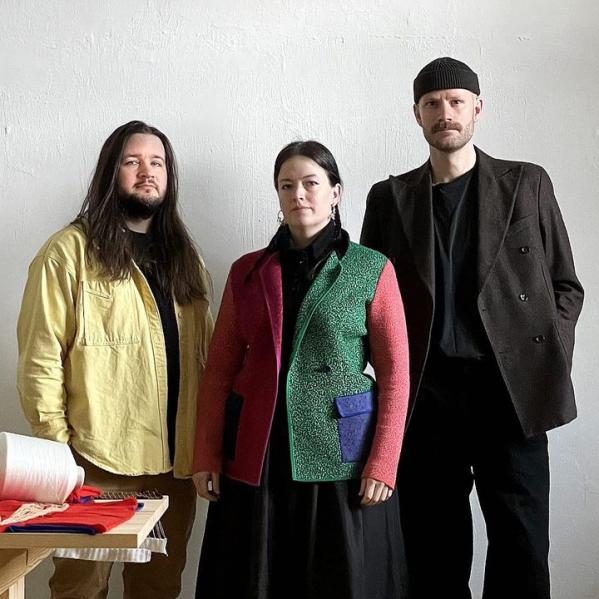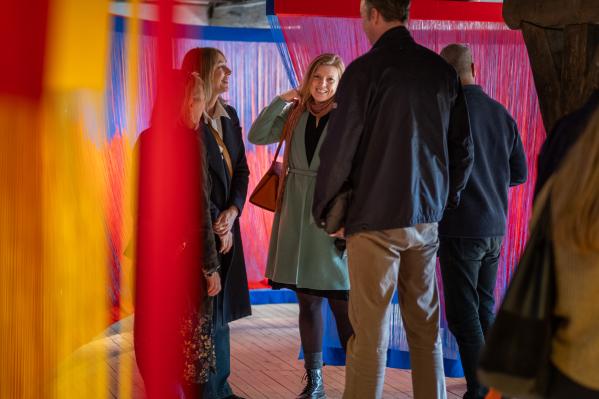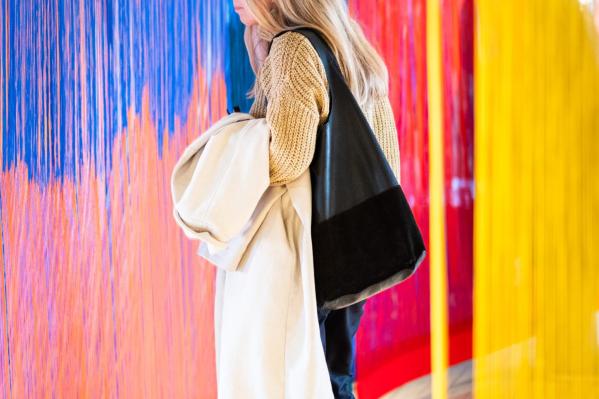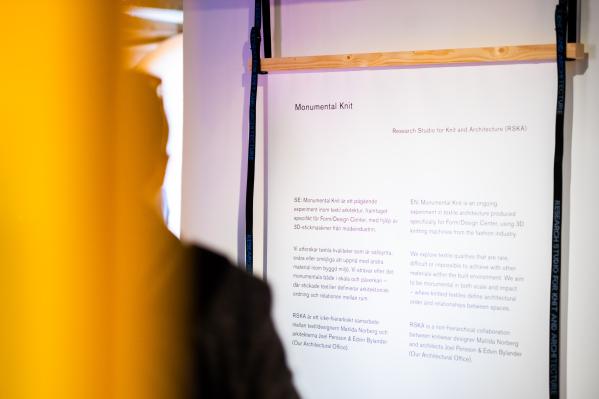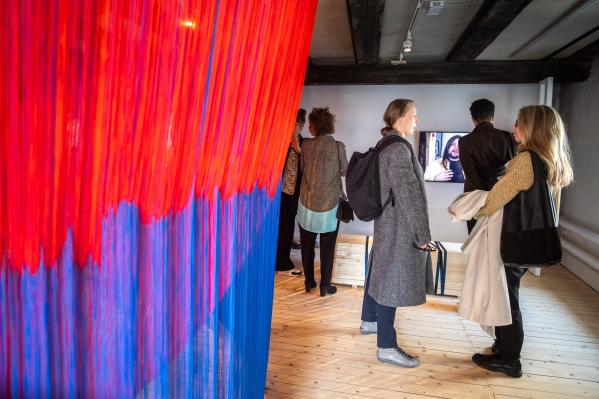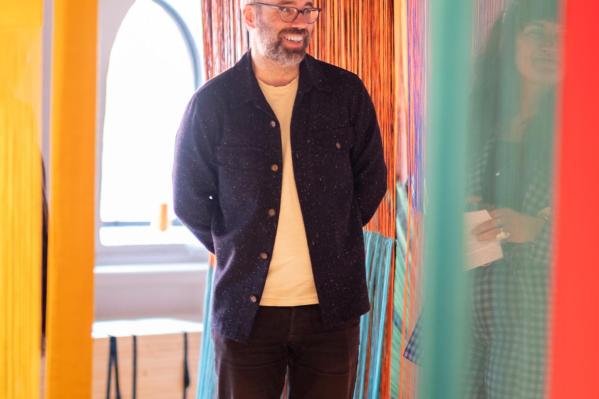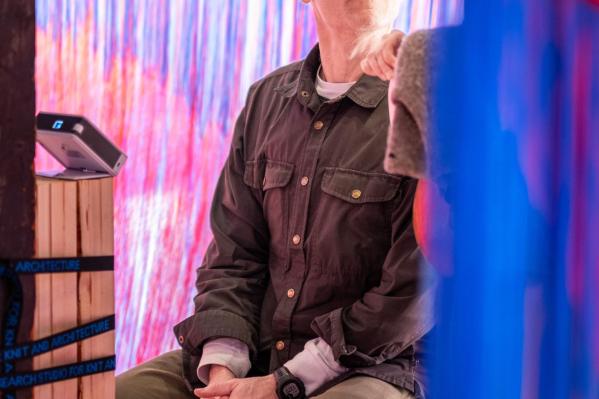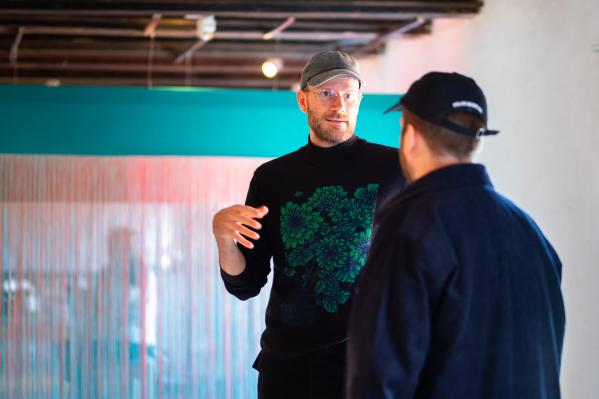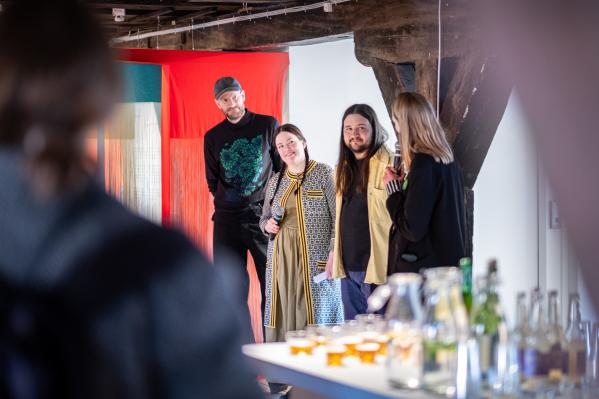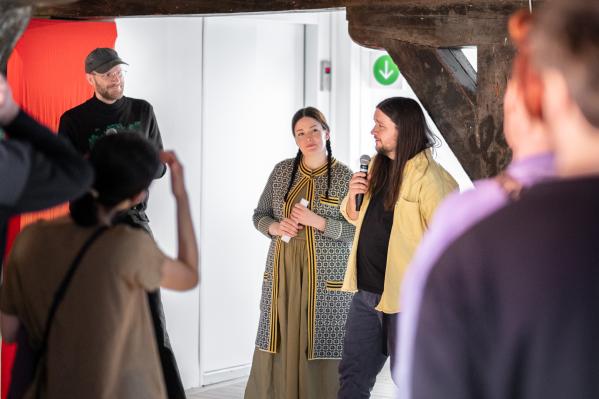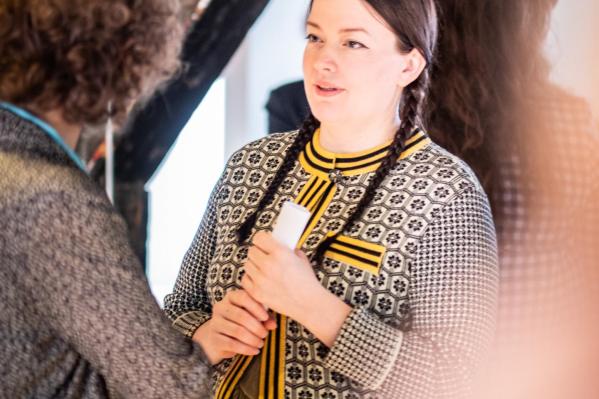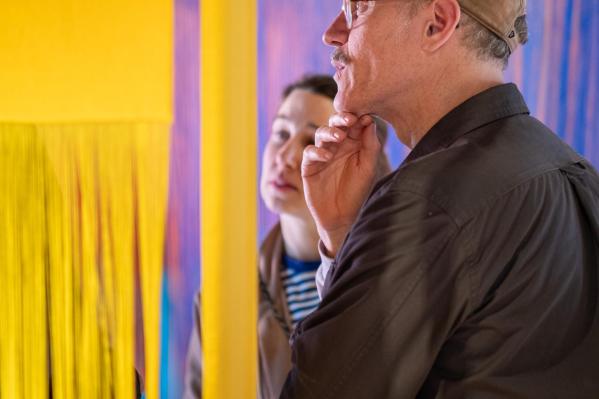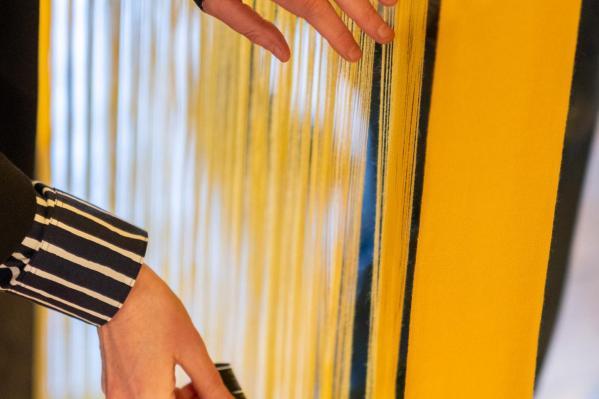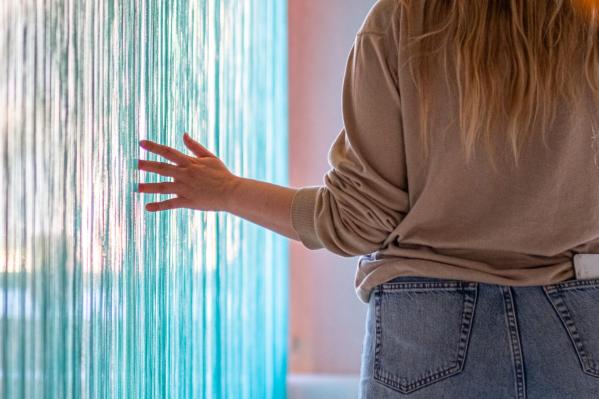Through artistic research, Research Studio for Knit and Architecture examines how the textile industry's 3D knitting technology, which is currently used to produce cheaper garments in a shorter time, can be used for completely different purposes. The core question revolves around the possibility of creating form that both fulfills the spiritual and physical needs of our bodies and at the same time find new viable techniques for a post-fossil and circular future.
By bending, draping and shifting, the studio investigates how objects, garments and spaces can come to life and at the same time remain intact. In their investigative work, the interplay between light and heavy structures develops, where form, transparency and tactility emerge in a rarely seen way.
"The digitally controlled knitting allows us to create large-scale materials with qualities that are both resource efficient and unique in the built environment" says Edvin Bylander (RSKA).
3D knitting is a technique for creating digitally designed and produced materials – much like 3D printing for textiles. The technology is developed to produce entire garments without post-processing – but is used in the exhibition on a completely different scale. With knitted materials in a single thread system, it is possible to pick up and use the same yarn several times. In construction, there is the possibility of using textile fibers that are not suitable for close-fitting garments, such as domestic wool, recycled textile fibers or regenerated fibers from raw wood. The material's low weight and the possibility of local production also mean reduced transport. Knitted materials can be mended without losing aesthetic or functional properties and washed instead of being repainted or replaced.
